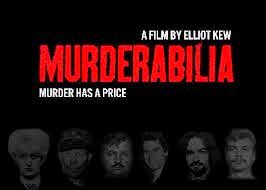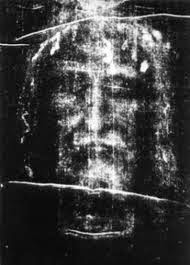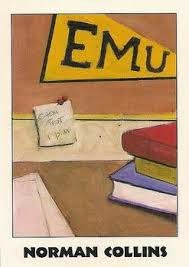Larry's son Jerome turned the building into an afterhours club called the Wax Fruit Rhythm Cafe where Detroit rappers performed until it closed in 1993. Larry and his wife renamed the business Cafe D'Mongo's. The "D" represents his wife Dianne.
 |
| Larry Mongo and Quentin Tarantino |
Larry invited my Terror In Ypsilanti researcher Ryan M. Place and me to attend a taping at Cafe D'Mongo's Speakeasy for a program called Ten Best Bars In America for Esquire magazine. The joint was packed with the new face of Detroit--a mixture of young, upwardly mobile Detroiters.
***
The Mongo family has had a long and fabled history in Detroit since the first four Mongo men left South Carolina in 1906 to avoid the long arm of the law. One of them was wanted to murder. During prohibition, the Mongo family worked with Detroit's Purple Gang, so they could safely operate a chain of fish markets in the Detroit area which the gang used to launder their bootlegging, extortion, and gambling profits. This relationship gave that generation of Mongos a certain level of power and respect on the street.
In more recent Detroit history, Larry and his younger brother Adolph have been political advisers to Black mayors from Coleman Young--Detroit's first Black mayor--to Kwame Kilpatrick. When things went terribly wrong in the Kilpatrick administration, the Mongo's wisely took a step backwards to disassociate themselves from the bad publicity.
One afternoon, I was able to meet and talk with Larry Mongo about the issue of race which has dominated Detroit politics for the last fifty years. Being an Ofay--derisive Black term for a White person--I was not aware of something which contemporary social scientists have labeled pigmentocracy. Within the American Black population at the turn of the twentieth-century until the mid-1960s, wealth and status of African Americans were tied to the shade of skin color--the lighter, the better.
"There was an interracial caste system in the Black community where dark skinned blacks were looked down upon by lighter skinned blacks as being genetically inferior," Larry Mongo explained. "There was something called The Blue Vein Society where a person had to show his or her forearm to look for a dark blue vein to determine if the person was mixed race or not.
"Inner racism was worse at times than outer racism. We classified ourselves by shade of color or how much African blood you had. You might be described as an octoroon--a person of one-eighth African blood--or a mulatto--bi-racial--or somewhere in between."
 |
| President Johnson and Martin Luther King at signing of the 1964 Civil Rights bill. |
I asked Larry Mongo about the impact of the 1964 Civil Rights Act on Detroit's Black community. "After the Civil Rights Act--passed by Lyndon Johnson's administration--everything changed in the Black community and neighborhoods," Larry explained.
"Don't get me wrong, things were never perfect back then, but everyone knew their place and the color lines were clearly drawn. Cross them and you did so at your own risk. That was in the heyday of the Jim Crow--separate but equal--laws.
"All manner of Black businesses catered to Black neighborhoods and things usually went okay. Everyone was getting by. When the Jim Crow laws were repealed and the Civil Rights Act was passed into law, more affluent Blacks could spent their money in White establishments like hotels and restaurants which had been off limits before.
Patterns of segregation--previously enforced by red-lining and real estate covenants--became illegal and drew successful middle-class Blacks out of the ghettos into outlying areas. This migration drew valuable resources away from the Black neighborhoods.
"Many Black businesses were mom-and-pop operations in neighborhoods that could no longer support them. These
neighborhoods went into further decline struggling to survive. Then in the sweltering heat of July 23rd, 1967--all hell broke loose on 12th Street--Detroit started to burn.
"When (Antoine) Cadillac came here in 1701, it took 250 years to build up Detroit. This city has rotted from the inside out. Detroit needs a new economy--then business growth will begin to feed everything else. The city will survive only by creating wealth and decent jobs to help our residents pull themselves out of poverty and despair. More of our young people need to go to school rather than jail. They need to go to the library instead of the street corner. Now that will be a real revolution."
***
After my visit with Larry Mongo, I decided to Google the Blue Vein Society to learn more about it. From there, my research led me to several other culturally historic facts about the Black community in the first half of the twentieth-century.
The phrase Blue Vein Society originated at the end of the nineteenth-century, according to American author Charles W. Chesnutt in 1898. "This is a group which limited its membership to blue veins--light-skinned Black people White enough to show blue veins on their forearms.
"At the turn of the century, there were many American cities with Blue Vein Societies representing the miniscule Black upper and upper-middle classes. The Negro Blue Vein Society mimicked the white patrician Blue Blood Societies. Their primary purpose was to sponsor balls and galas as meeting places for eligible blue veined youth."
The Creoles in Louisiana formed almost a separate class of black American because they tended to be better educated with lighter skin--the children of more generations of co-mingling with European Whites--especially the French and Spanish.
Another phenomenon of Black cultural pigmentocracy--a carry over from the nineteenth century--was the paper bag test which originated in New Orleans. A brown paper bag would be attached to the entrance of a party or event, and anyone darker than the paper bag was denied admittance. This test was said to have been used in many churches, fraternities, and nightclubs.
 |
| Michael Eric Dyson |
My research also revealed some other labels still used within the black community. A redbone describes light coppery or caramel-colored skin with red overtones in the hair, sometimes with freckles and sometimes not. A yellowbone--also called high yellow--is slang for light-skinned Black females who could often pass as a White person.
Remember, this was the world before the 1964 Civil Rights Act. In an attempt to secure a better life in segregated America, many light-skinned, mixed-race Blacks crossed the color line as reborn descendants of European ancestry and never looked back.
The history of mankind is rife with examples of one group who perceives itself as superior foisting itself upon another group who is perceived as inferior. This oppression takes many forms but always ends up the same way with someone being discriminated against.
The history of mankind is rife with examples of one group who perceives itself as superior foisting itself upon another group who is perceived as inferior. This oppression takes many forms but always ends up the same way with someone being discriminated against.








